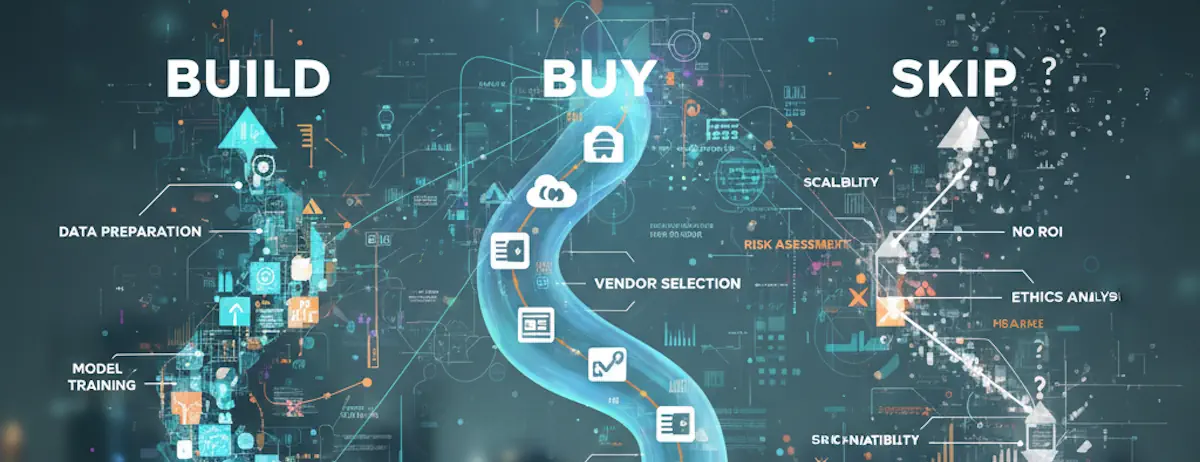Vibe Coding: Speed Meets Reality
The line between creating code and understanding it just got blurrier

I worked with a junior developer a few weeks ago that was building an authentication system. By working, I mean done in twenty minutes.
Not a prototype—a functioning system with OAuth integration, session management, and proper error handling. They described what they wanted, Claude Code generated it, and boom. Done.
Then I asked them to explain how the session invalidation worked so we could document it.
Silence.
This scenario isn’t unique. According to Google’s 2024 DORA report, increased AI use speeds up code reviews and documentation, but comes with a 7.2% decrease in delivery stability. Meanwhile, over 84% of developers have experience with AI code generators, yet only 43% feel good about AI accuracy and 31% are skeptical.
The Vibe Coding Promise vs. Reality
“Vibe coding” sounds magical because it often is. Describe your intent, iterate through conversation, and watch working software emerge. Tools like Claude Code, GitHub Copilot, and Cursor are democratizing development in ways we couldn’t imagine five years ago.
After a few months exploring and watching teams use these tools, I’ve found that the line between creating code and understanding code isn’t just blurring—it’s disappearing entirely.
Where Vibe Coding Accelerates Value
Don’t get me wrong—these tools are game-changers. The integration in Visual Studio Code for agents and, recently, the addition of MCP servers, has been a lifesaver lately for me in a couple of projects to create chain-of-action prompts.
Internal automation and tooling. Need a script to parse log files or automate deployment steps? Perfect use case. Low risk, high value, and if it breaks, you fix it quickly.
Rapid prototyping and MVPs. Getting to “working” fast lets you validate assumptions before investing in proper architecture. The code quality debt is intentional and temporary.
Learning unfamiliar domains. Exploring a new framework or API? AI-generated examples can accelerate your understanding—if you take time to understand them.
Boilerplate elimination. CRUD operations, config files, test scaffolding. These are solved problems where speed trumps creativity.
The Red Flags
Shadow complexity. Teams ship features without understanding the underlying architecture. When something breaks at 2 AM, nobody knows where to look.
Security by accident. AI generates code that “looks secure” but misses subtle vulnerabilities. Input validation that works for happy paths but fails under load. Authentication that’s technically correct but practically flawed. A study analyzing GitHub Copilot found that top-ranked suggestions were vulnerable 39% of the time.
Integration nightmares. Individual components work perfectly in isolation but create chaos when combined. AI doesn’t understand your system’s constraints or your team’s conventions.
The maintenance trap. Six months later, when you need to modify that AI-generated authentication system, you’re reading it like someone else’s code. Because functionally, it is. GitClear’s research indicates that AI tools may be quietly changing how we write and maintain software, with potential impacts on long-term code quality.
Vibe Coding Risk Assessment Matrix
Internal tools, prototypes, learning exercises
Boilerplate, CRUD operations, testing scaffolds
Complex integrations, unfamiliar domains
Production security, authentication, payments
Use this matrix to evaluate when vibe coding accelerates value vs. when it increases risk
The Sustainability Test
Before shipping AI-generated code to production, ask yourself a few key questions.
- Can someone on this team explain how it works? Not just what it does, but how it does it and why those design decisions matter.
- Does it follow our architectural patterns? AI doesn’t know your coding standards, naming conventions, or error handling strategies.
- What happens when it needs to change? Because it will. Every piece of production code eventually needs modification.
- Are we comfortable with the blast radius? Some components can fail without major impact. Others bring down the entire system.
Making It Work
The teams getting vibe coding right treat AI as a very smart junior developer–eager, optimistic, and has read all the manuals, but knows absolutely nothing about your systems.
They pair program with AI tools, reviewing and understanding every suggestion before accepting it.
They maintain strict code review standards, regardless of the code’s origin. AI-generated code gets the same scrutiny as human-written code.
They document the intent behind AI-generated solutions, explaining not just what the code does but why those approaches were chosen.
They invest in testing, because AI is remarkably good at generating code that works for known cases and remarkably bad at thinking about edge cases.
Don’t Stop, Won’t Stop
Vibe coding isn’t going away. The productivity gains are too compelling, and the tools are improving too rapidly. But we need to be honest about the trade-offs.
Speed without comprehension isn’t engineering—it’s wishful thinking with better tooling.
The question isn’t whether to use these tools. It’s whether we can use them responsibly while still delivering value to our customers.
What’s your team’s experience been? Are you seeing similar patterns, or have you found ways to maintain both velocity and understanding?








